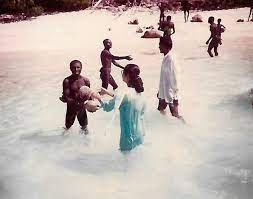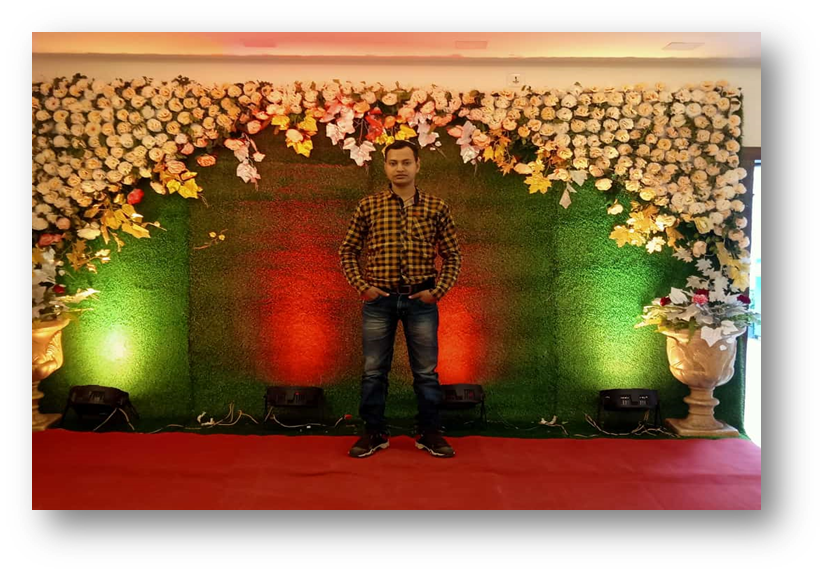Meet the Indian Woman Behind the World's first friendly contact with the Sentinelese.
Meet the Indian Woman Behind the World’s first friendly contact with the
Sentinelese.
On 4 January, 1991, more than 1,200 kms from the
Indian mainland in the Bay of Bengal, a young Indian woman anthropologist waded
waist-deep into the coral reefs to hand over a coconut to a man from the
Sentinelese tribe. This was the first-ever friendly contact with this
hostile tribe of the Andamans.
Sentinelese--one of the few un-contacted
people in the world, who have lived in the North Sentinel Islands of the
Andamans for an estimated 60,000 years, shunning any contact with the outside
world. Traced back to the Palaeolithic age, they are considered as the first
inhabitants of India. Many attempts have been made and innumerable risks
were taken to build a connect with the tribe but all were turned away with bows
and arrows. Small parties were sent by the Anthroplogical Survey of India
in the early 1970s but to no avail.
On 4 January, 1991, travelling more than
1,200 kms from the Indian mainland, MV Tarmugli, the Andaman Nicobar
Administration ship, put down its anchor off Allen point on the southwest part
of the North Sentinel Islands. A young Indian woman anthropologist waded
waist-deep into the coral reefs to hand over a coconut to a man from the
Sentinelese tribe. This was the first-ever friendly contact with this
hostile tribe of the Andamans.
The team initiated contact by going toward the island on a
smaller vessel and dropping coconuts into the water as gifts. A few armed men
came into the water to collect coconuts. This repeated until the team ran out
of coconuts, at which point they returned to the main ship to resupply. The
second time, a young man aimed his bow at Chattopadhyay, but a Sentinelese
woman made him drop his weapon. Chattopadhyay escaped from this attack and the
team retreated. When the team returned for a third time, Chattopadhyay and
colleagues jumped into the water near the boat and handed the islanders
coconuts in person.[1][9] One of the crew took photographs of crew members
handing coconuts to the islanders, which were widely circulated in the press. Chattopadhyay
has some mastery of the Ongan languages, including
the Jarawa
language, so she was able to
understand some of what they said. As she approached shore, five Aong men and
one woman climbed aboard. The Aong woman sat next to her, and Chattopadhyay
hugged her. More women greeted her when she came ashore.
It was now up to the contact team to take initiative, and
they started dropping coconuts in water which they had brought with them. Then
something which had never been seen before happened. After a bit of trepidation
a few Sentinelese men came sprinting and waded on the shallow continental shelf
to collect the floating coconuts. The team was awestruck; the Sentinelese had
accepted a friendly gesture. The team leader instructed that more coconuts be
dropped and this time the Sentinelese brought a canoe to collect the coconuts
in cane baskets. The women and children however maintained a distance and
remained on the shore. A invisible wall however stood between the Islanders and
the contact team. No party made the first move to bridge the gap further. Four
hours rolled by, the contact party kept floating coconuts and the Sentinelese
kept collecting them. Perhaps this was the farthest that the Islanders would
go.
With
coconuts over, the team went back to the ship to replenish their stock. It was
2 PM when the team returned. The process of dropping coconuts started and this
time the tribe welcomed the contact party with shouts “Nariyali Jaba Jaba”. Madhumala recognised this cry
to mean “more and more Coconuts”, a distinct Onge dialect, given her knowledge
of a number of Andamanese languages. The Sentinelese in the second round had
become bolder. A young Sentinelese youth waded up to the boat and touched it
with his hands. Following him more men closed in to collect the coconuts.
In this
moment of breaking the ice a Sentinelese youth who was sitting on the shore got
up and aimed his arrow at the contact party. Fazed but not betraying fear,
Madhumala gestured at the youth to come over and take his share of the
coconuts. This was a moment of standoff, Madhumala refusing to remove eye
contact and the arrow refusing to go down. The arrow was released but
Providence intervened. As the marksman was about to be released , a Sentinelese
woman standing nearby gave a push to the marksman, and the arrow missed its
mark and fell harmlessly in the water. The woman had done that on purpose thus
saving the contact party from either severe injury or even death.
John Allen
Chau, 26, was identified as the victim by Jeff King, president of Washington,
D.C.-based non-profit International Christian Concern. Chau was not a part of
the non-profit, but he said the missionary was traveling in a group of other
missionaries and adventurers. Chau was
killed by Sentinelese.
Thank you for Reading.
Please give me your comment.
Best wishes from
Suvendu Singha (India,Odisha, Balasore,Jaleswar)













Proud of you ma'am
ReplyDelete